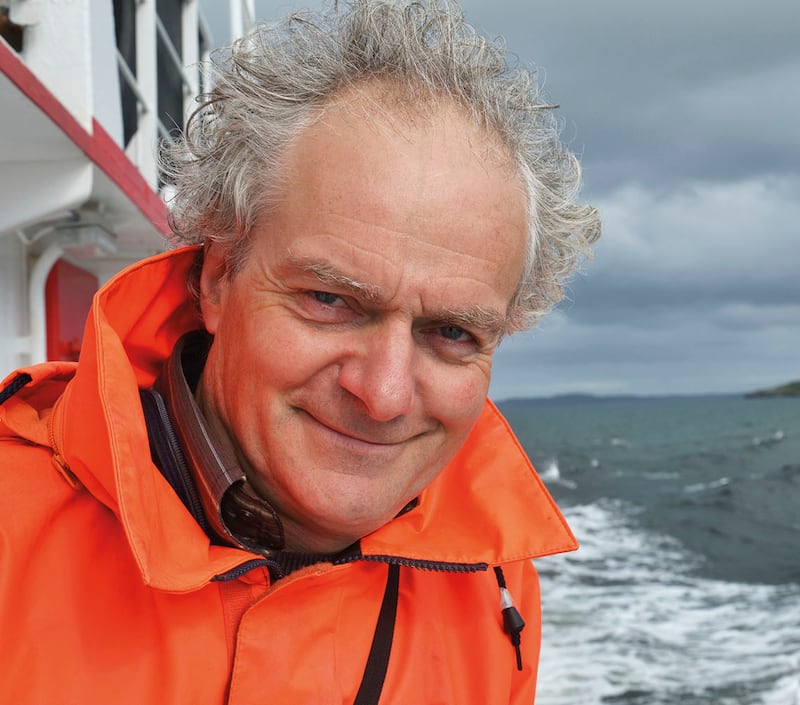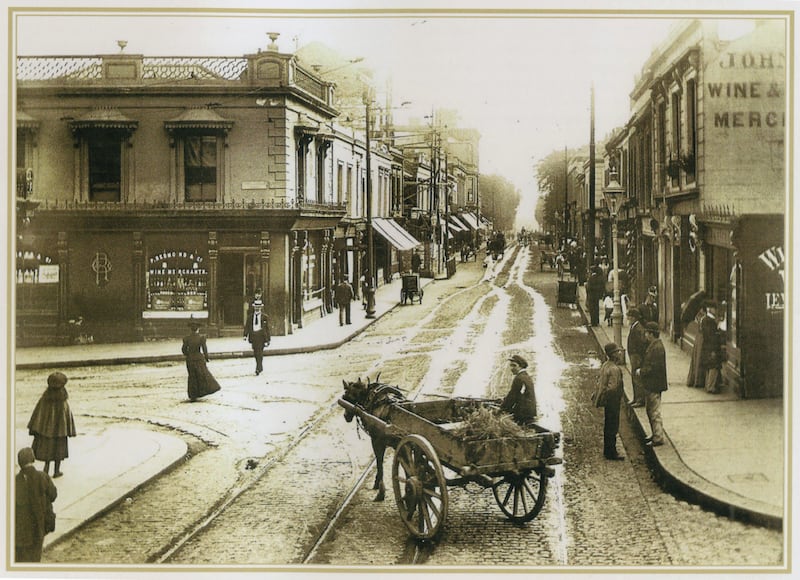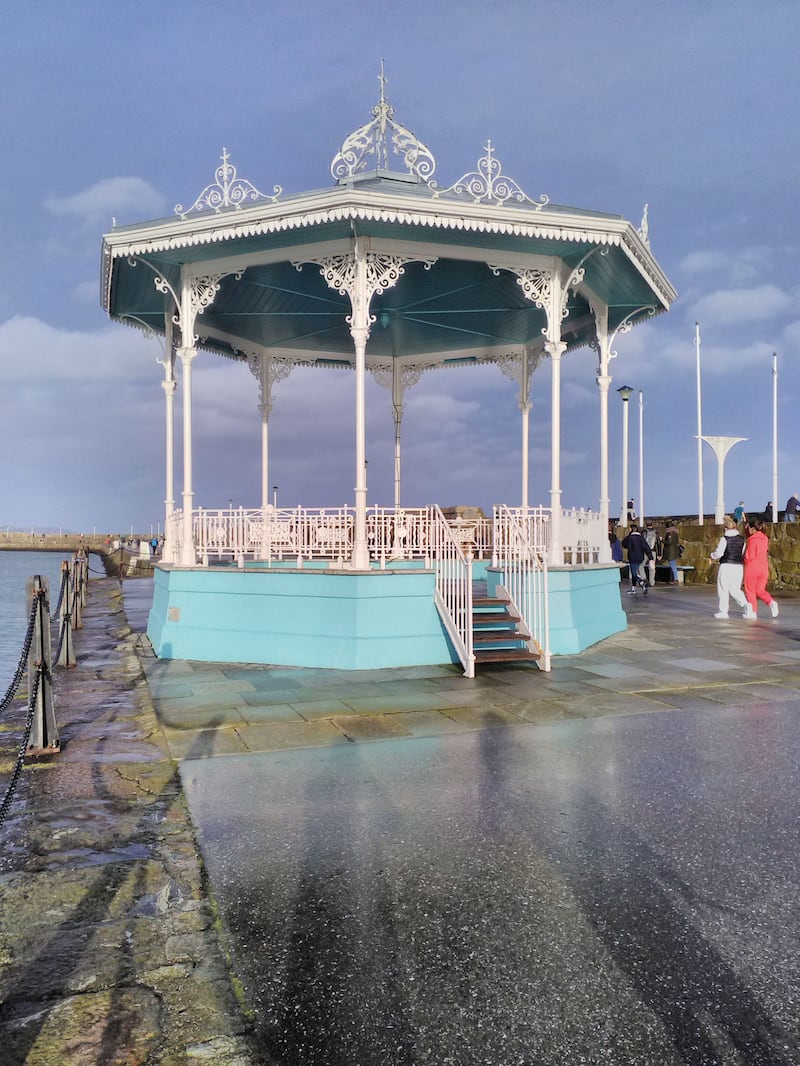Soft grey flecked with silver glinting in the sunlight – most of us who love the south Dublin coastline have probably never attributed its special beauty to the colour of granite. But when you think of the 18th-century flagstones which built the Martello towers, Dún Laoghaire’s magnificent piers and the steps and stairs to the coastal railway, the title of Peter Pearson’s new book on Dún Laoghaire, Sandycove and Dalkey, The Granite Coast, makes perfect sense.
Dún Laoghaire-born painter and architectural historian Pearson has had a lifelong obsession with the town’s harbour, which he says should be seen as “a monument”.

Commenced in 1817, Dún Laoghaire was to offer an “asylum harbour” for the port of Dublin after the wrecking of the Prince of Wales and the Rochdale off Seapoint and Blackrock in 1807 had left 380 people drowned and body parts strewn from Ringsend to Dalkey.
The comings and goings over what form the new harbour show little has changed in 205 years when it comes to getting agreement on major infrastructure projects. And they got it wrong, making the mouth of the harbour too wide so that breakwaters had to be constructed in the early 2000s to calm the swell. But still, Dún Laoghaire harbour is, for Pearson, “a masterpiece in stone”. And the quarrying of this local granite, mostly from nearby Dalkey, formed and transformed the landscape of this coastal region.
READ MORE
Half of Dalkey Hill was blasted away to create what is now Dalkey quarry and the stone, provided from commonage at no cost to the Harbour Commissioners, was transported to the harbour site by a funicular railway. Traces of the metal tracks, as well as grooves worn by the cables in the stone, can still be seen in Dalkey quarry while the path along the present railway has preserved the name “The Metals”.

Much of Dalkey as we know it today was built when the men who cut and carted stone were rehoused; 1,000 of these were living on Dalkey Common in 1823 with their families and without any sanitary facilities or running water. Outbreaks of typhus and cholera as well as injuries were common, Pearson tells us, and his passion for the harbour is informed by a desire to honour the skill and labour of the men who made it.

Glasthule was also built to rehouse harbour workers and anyone who has ever envied the cappuccino-quaffing denizens of that village will enjoy Pearson’s quotation from The Irish Times in 1862, which described “an unhealthy and low-lying village with a dense hive of cabins or rather wigwam population”.
We meet in the huge Lexicon library on Dún Laoghaire’s seafront – Pearson loves the interior but describes the exterior as “brutal”. He would have opposed the building of the harbour, too, had he been around at the time, I joust, but I’ve landed no punch. The obliteration of the wild coastline in the mid-19th century makes no case for the obliteration of the Victorian town and villages which replaced it, after all.
In laying the glories of Dún Laoghaire, Sandycove and Dalkey before the reading public he clearly hopes to foster a determination that further development be sympathetic
The 10-year-old Pearson experienced the destruction of Nelson’s Pillar in Dublin city centre by an IRA bomb in 1966 and the accidental burning of the beautiful Puginesque St Michael’s Church in Dún Laoghaire, which happened the same year, as personal losses: “I began to realise that the past isn’t something permanent.”
Growing up in Dún Laoghaire, he spent long hours with what he calls “abandoned treasures for a young boy” – old bottles featuring the names of local pubs and local chemists and even an old spike from the railway – from the dump at the back of the West Pier.
One of his juvenile paintings, reproduced in the 2011 study of his painting, Of Sea and Stone, shows this area of the West Pier with just one Pigeon House tower in the distance. After the second tower was built, they became a constant presence in his myriad paintings of Dublin Bay and though they were a 1970s brutalist intervention, he now loves them. But there has been no change of sentiment towards the great 1970s hulk of Dún Laoghaire Shopping Centre.
“They knocked Gresham Terrace, a Victorian terrace, to make way for that hideously ugly car-park structure. There was ornamented Dutch brick from the corner of Marine Road to Lipton and H Williams supermarket on George’s Street. That was all whacked in 1974. I probably couldn’t verbalise it but I felt there was something wrong with gutting the centre of this old town.”
Pearson’s mother Phyllis, a primary schoolteacher, encouraged his interest in painting and conservation, as did his accountant father, Derek. They gave him an old box camera and he photographed what was being lost. He was painting the buildings and landscapes of his native town from a young age: “My painting has always had an element of record about it.”
He realised early that Dún Laoghaire was “a bit particular”. Decades later, he can articulate in The Granite Coast the reasons for that “particularity”, one of them being the speed of the town’s development.
In little over a decade, Dún Laoghaire changed from being an old village into a new town. King George V visited in 1821 and the town was renamed Kingstown in his honour; the mail packet service to Liverpool opened in 1826 followed by the mail packet to Holyhead; and the Dublin to Kingstown railway line, the first line in Ireland, opened in 1834.
The building of the railway line along the coast necessitated the levelling of rocky outcrops of the granite coast, Dún Laoghaire’s Martello tower and what was left of the fort of the 5th-century King Laoghaire, which were where the current railway line travels along the Coal Harbour. It even threatened to cut the general population off from their only bathroom – the sea – until baths were built to compensate.
But it also made Kingstown a fashionable commuter town, and the fact that it developed so rapidly gives a special coherence to its Victorian streetscapes. Add to these the town’s magnificent harbour, including its unique advantage of having three Victorian purpose-built yacht clubs, as well as its closeness to Dublin, and you understand the force of Pearson’s argument that it must be kept “intact and safeguarded from unsympathetic new developments, whether roads, car parks or buildings”.
This latest, lavishly illustrated book is a celebration of the granite coast, in contrast with his 1981 book, Dún Laoghaire/Kingstown, which lambasted the authorities who were allowing the town he loved so well to be destroyed.
In hindsight, it’s easy to see that Pearson was, from the 1970s on, a combatant in a culture war which was inevitable given the country’s rapid development, both economically and educationally. He was active in the campaigns to save Temple Bar and Drimnagh Castle, but from the shattered remains of Georgian and Victorian houses all over Dublin he salvaged a vast collection of decorative artefacts which he hopes will some day be on public display.
Pearson’s side eventually won the war: he notes that there are now heritage officers in the local authorities as well as registers of listed buildings. He is still an activist, though, and the campaigning intent of The Granite Coast is obvious.
In laying the glories of Dún Laoghaire, Sandycove and Dalkey before the reading public he clearly hopes to foster a determination that further development be sympathetic. And while Dalkey and Sandycove, along with Monkstown and Blackrock, are succeeding as urban villages, the town of Dún Laoghaire is visibly struggling.
He despairs of the refurbishment of Dún Laoghaire’s Victoria Baths, for instance, which has been five years in the making but still does not include a swimming pool; he wants a museum for Dún Laoghaire, which the local council has committed to putting on its agenda; he suggests that an art gallery of international standing be developed and indeed, there have already been exhibitions in the vacant ferry terminal building; and he thinks a permanent covered market might attract people back to the main street.
I tell him it’s affordable housing which will bring most life to Dún Laoghaire’s streets and he argues back that he has nothing against apartments which are sensitively developed. A major “living over the shop” scheme could be explored, for instance.
He congratulates the council for its conservation work in the town, such as the refurbishment of the East Pier bandstand and the tea house in the Peoples’ Park. But as to the future development of the town, he asks, “Do they have a vision?”
The Granite Coast by Peter Pearson is published by O’Brien Press












